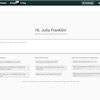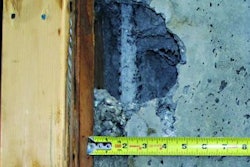- Housing starts fell 11.7% in October
- Single-family starts slipped 1.1%; multi-family starts dropped 43.5%
- Permits increased 0.5%
- Single-family permits increased 1.0% -- the first increase in 7 months
- Multi-family permits slipped 0.7%
This report was not as bad as the headline number suggests.
In evaluating this report, permits matter more than starts because they are better measured, are less affected by seasonality, and are forward looking. Permits in October inched up 0.5%, after slipping to a 17-month low in September. Single-family permits—the most important number in this report—rose 1.0%, the first increase in seven months. Multi-family permits slipped 0.7%, which, statistically speaking, is a flat reading.
The drop in housing starts was larger than we anticipated—but not a total surprise. In recent months, starts have been increasing relative to permits. When this happens, builders usually adjust by slowing down the pace of construction. We expected this adjustment to take place over two to three months. Instead, it took place in October. Going forward, the permits numbers point to flat housing starts numbers over the next two to three months.
Housing starts stabilized at depressed levels two years ago, and have made little headway since. Over the past 24 months, builders have put up an average of 575,000 units (annual rate) per month. Under normal conditions, they would put up at least 1.5 million units per month (annual rate) to meet demand from a growing population, and to replace old and damaged homes.
Housing starts remain depressed for three main reasons. First, the jobs recession has sharply reduced the rate of household formation. Household formation is down because the jobs recession has reduced immigration and led to "doubling up." Second, financing is hard to get. In yesterday's NAHB builder sentiment press release, NAHB Chairman Bob Jones said, "Builders remain very concerned, however, about the lack of available financing for new-home construction at a time when inventories of completed new homes are quite thin; after all, you can't sell what you can't build." Third, the housing glut, and the wave of foreclosures hitting the market has depressed housing prices, making it hard for builders to make a profit on a new home.
Assuming credit markets continue to improve, the key for housing going forward is employment growth. New jobs will require that new homes be built nearby. More important, the household formation rate will pick up once job growth takes off. Increases in the household formation rate will then reduce the housing glut, which will stimulate new construction. Overall, we expect the economy to add about 920,000 jobs during 2010, followed by 1.8 million more in 2011 and 2.6 million more in 2012. With more jobs, housing starts will bounce back from a postwar low of 554,000 units in 2009 to 604,000 units in 2010, 783,000 units in 2011, and 1.21 million in 2012.



















